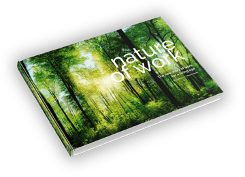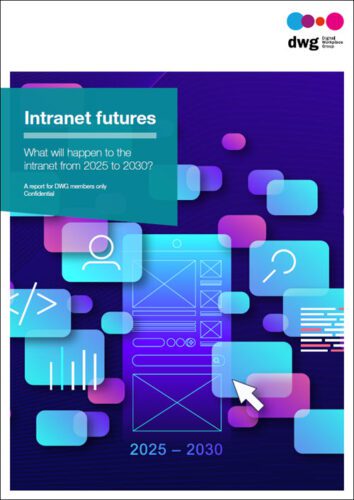A female focus on ‘Nature of Work’
For International Women’s Day we sat down with Shimrit Janes, co-author of Nature of Work, to discuss some of the elements of the book that are most relevant to women in work.
 Shimrit Janes is Director of Knowledge for Digital Workplace Group (DWG), focused on curating knowledge on the digital workplace for its members and clients such as Adobe, The Coca-Cola Company, and Ubisoft. Shimrit has worked with Paul and DWG colleagues on various initiatives, such as Digital Nations Group, as well as co-hosting the 24-hour global digital experience DWG24. She has had a number of research papers published with DWG on topics such as organizational readiness and collaboration.
Shimrit Janes is Director of Knowledge for Digital Workplace Group (DWG), focused on curating knowledge on the digital workplace for its members and clients such as Adobe, The Coca-Cola Company, and Ubisoft. Shimrit has worked with Paul and DWG colleagues on various initiatives, such as Digital Nations Group, as well as co-hosting the 24-hour global digital experience DWG24. She has had a number of research papers published with DWG on topics such as organizational readiness and collaboration.
Shimrit lives in London, where she crochets, enjoys video games and keeps more books than the space allows.
Firstly, how does it feel to become a published author?
Really, really exciting and surreal! It was a childhood dream, and my dad always joked that I would fall asleep cuddling books instead of teddy bears.
I remember being a kid and knowing I wanted to write a book; I didn’t know what it was going to be about, but I knew I wanted to write one. And so the fact that it’s now happened is just exciting and surreal.
Where did the idea for Nature of Work originally come from?
Paul (Miller, co-author of Nature of Work) had the seeds of the idea originally. He found he was spending more time in nature near to where he lives and a question had started to emerge for him: What are the differences between the natural world and the way in which organizations flow and work?
So, it started with him and he brought this to me to explore together through conversation.
Over the course of 2019 we kept having these conversations and talking about what it might mean to bring stories and inspiration into the world of work as a catalyst for change.
We found that we both strongly felt the legacy of the Industrial era wasn’t fit-for-purpose for work today and was actually causing harm – for a whole host of reasons. We also discovered that neither of us was particularly inspired by the idea of a ‘Digital Age’ or the ‘future of work’ as optimistic visions of what working life could be – whereas the idea of moving into a ‘Living Age’ and reconnecting the world of work with nature felt much more urgent and needed.
You live in London, so maybe you’re not quite as exposed to the natural world as many other people. What drew you to the subject of Nature of Work?
I’m born and bred in North London and still live here. But I think it’s interesting, because even though I’ve grown up in an environment where the closest I get to nature has typically been the garden and the parks we have all over London, there is definitely a pull to the natural world that I feel.
In the book, we talk about the concept of ‘biophilia’, which is our innate draw to nature – and I think that’s always been there for me; I’ve always been fascinated by how the natural world works and by animals.
I live on the 12th floor of an apartment block in London and from ground level it feels very grey and concrete. But when you look southwards across London, there’s so much greenery. I remember having one of our exploratory conversations with Paul and looking out of the window while reflecting on something we’d just said. And it was like I was using a different lens; I was no longer focusing on the houses but on the trees – and London suddenly looked like a city that had emerged from a vibrant forest, rather than just a concrete jungle. It was an eye-opening moment for me to take in how green London actually is.
Then, while we were writing during lockdown in 2020, being in a flat I obviously didn’t have easy access to outdoor space, so that draw and desire to be in nature and to feel it all around you – to smell it, and hear it, and feel it – was amplified even more.
We’re talking on International Women’s Day – do you think there are themes in Nature of Work that will resonate especially with women in the workplace?
Yes, for sure, but at the same time it’s important for men also to learn about these topics, because many working men report to women, manage women, have different relationships with women who are working. If we’re ever going to achieve gender equity, it’s not just about women taking all the initiative to try and make change happen; men need to be actively involved as well.
And there are different aspects to that, such as from a ‘life cycle’ perspective, or leadership, or inclusivity. For example, it was really important to me as a female author to make sure that in the book we talk about things like the impact on working lives of, say, the menopause or having your monthly menstrual cycle. Or what it means that the role of caregiver or ‘homemaker’ often falls to women, and how this impacts their ability to work within the current system. And these things often seed the gender pay gap and access to work, opportunities and leadership roles.
It was important to make sure issues such as these were included in Nature of Work, to raise awareness of them and to help female readers feel represented in what they’re reading as well. For example, I was having a conversation with someone a couple of weeks ago who raised the point that menopause is something that has a huge impact on somebody’s work and worklife, but isn’t often spoken about or given much visibility. And I mentioned that we speak about it in the book and give examples of organizations that have a menopause policy and put things in place to help women going through that. So, from that side, yes, absolutely it will resonate with women and hopefully also be educational and awareness-raising for all readers of all genders.
And then at the same time I think some of the themes of Nature of Work, which are to do with relationships, diversity and the way we structure teams, aren’t specifically aimed at women; they are about creating more inclusive work environments generally, which benefits everyone, but particularly those who historically haven’t been included.
When you started your research for Nature of Work we had never heard of COVID-19 but you were forced to adapt. Are there elements of the pandemic and the related restrictions that you have found specifically affected women in the workplace?
As we were doing our research and I was reading the studies and surveys that were emerging, we were starting to see evidence that where, for example, heterosexual couples were living and working from home together, women were tending to take on the bulk of the extra workloads of childcare, home-schooling, and/or the majority of the domestic work. Even though men were doing more than they would normally, it was still generally speaking the women picking up the lion’s share, which in turn was impacting their ability to work. There’s a real concern that a lot of the gains made for women in work economy are being reversed.
Another element to emerge was that a lot of the jobs most heavily impacted by the pandemic were, for example, in retail, the beauty industry and the service industry, which often employ women, and so they were being adversely impacted in this regard as well.
At the same time there were some positives; for example, the ability for organizations to see what flexible working actually looks like and how it can support people who are carrying out or sharing caregiving roles, or who would like to be able to flex their day more around home duties.
As countries hopefully start to emerge out of their respective lockdowns, are there lessons from Nature of Work that could be applied specifically to the female workforce going forward?
Nature of Work shows us the art of the possible to create more inclusive and thriving work environments. There are already fears and evidence that the gains made in gender equality in the workplace are being reversed as a result of the pandemic, so, as we emerge, there needs to be intent and action to make sure that gap can be closed. Considering the experience of women through each of the Nature of Work elements can help start to create those better working environments.
We talk about ‘life cycles’ in the book, for example. This is not just understanding things like the employee life cycle, or the life cycle of an organization, but also more literally our life cycle as humans and how we work. There are so many moments within a woman’s life – whether that’s caregiving, becoming a parent, dealing with fertility challenges, choosing not to become a parent, menopause, the menstrual cycle, and so many others – where the work environment isn’t necessarily set up to support us. I was recently reading about a woman who set up a charity called Pregnant then Screwed to support those who become pregnant and then lost work as a result – and there are some horrific stories associated with that where people have been bullied out of their jobs. At the same time, we hear about men who have become parents but don’t feel they can take the amount of paternal leave they actually want to, because they think they’ll be ‘punished’ for it workwise.
So I think just one example would be taking into consideration ‘life cycles’, for all gender identities and sexes, as that will help organizations to create environments that are more supportive of those different life phases, whether they happen as expected or aren’t happening as expected, to support people in a more empathetic way. Putting those structures and relationships in place where people aren’t made to feel afraid, or ashamed, or discriminated against because of wherever they are in their life cycle is essential.
Another Nature of Work element is ‘biodiversity’. What is the diversity of our workforces and leadership, and are we seeing those through both a gender and an intersectional lens? It’s so often spoken about how there aren’t enough women from all different backgrounds and experiences across the work community and at all levels; not just white women, but for example women of colour, women from different educational backgrounds, different faiths, those returning to work after a period away for caregiving reasons, or seeking work later in life after having raised children. Having those people with a seat at every table has a massive impact on the strategy of the organization, the performance of the organization, the services and products it provides, how successful it is, the experience of employees, of customers – and can also have a positive impact on communities, families, society.
We know that nature thrives on adaptive structures, which can respond to different environments and anticipate different threats. Within organizations, the ability to be agile, for women across all levels to know that they’re being actively heard and listened to, that their experiences and expertise matter and can have an impact, that they are also leaders and change-makers, is essential.
‘Nature of Work: The new story of work for a living age’ by Paul Miller and Shimrit Janes is available to buy at www.natureofwork.com
Take the next step…
Categorised in: → Nature of Work

